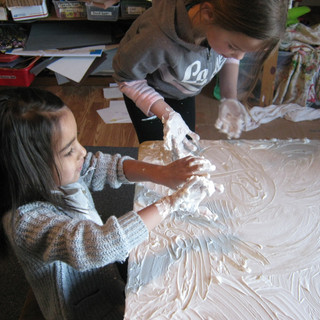Fair, Equal, and the Power of a Group
- The Teachers
- Mar 31, 2019
- 3 min read
As a school, our children are frequently grappling with ideas of fairness. As teachers, we do our best to help show them that fair and equal aren't always the same thing. For one child, expecting her to read 30 pages of a chapter book during our "relax and read" time is a fair expectation. For another child, expecting her to read 5 pages in a beginning reader is fair. This example is fairly easy to graph, but we ask our kids to stretch themselves and ask if it's equally easy for everyone to sit quietly on the carpet and listen to a story or solve a problem with a peer. We ask each of child to challenge himself and work in those areas that can be difficult. We've been talking about some of these same ideas in the context of history with the US Civil Rights Movement. Can separate but equal be fair (even assuming it truly was equal)? These are big ideas, and we grapple with them on a regular basis as we try to deepen our understanding.
Rachel's PreK Reflections
Last week was a hands-on week for Preschool (as usual!). We are still studying North America, and learned about “Tall Tales” within that theme. The children giggled and giggled when listening to stories of Paul Bunyan taming the whistling river and of his blue ox named Babe. They also had a lot of fun identifying which parts of the story were real, and which part were “tall tales.”
Math development is getting tall these days by way of measuring, adding, subtracting, and determining which numbers are “greater or less than” others. It’s amazing what the kids can do when learning through games, stories, and hands on materials!
Theme: US Civil Rights Movement
Our older elementary students are deepening their understanding of the events that helped create change during the US Civil Rights Movement. This week they were moved by the words of Dr. King's famous "I Have a Dream Speech" and explored tools of rhetoric.
Meanwhile our PreK, kindergarten, and first grade students are grappling with some of the underpinning issues of civil rights through stories, drawing, discussion, and acting. We have read a series of books that make us look at the idea that fair and equal aren't always the same. We have also been exploring what can happen when a group of individuals work together towards a goal. In "Lion vs. Rabbit" we learned how a rabbit could actually beat a bullying lion - by using all of his rabbit friends for help. Together we found it was easy to lift each of our classmates, and with the help of the older children, they even lifted their teacher. We read a version of the classic Tolstoy story "The Enormous Turnip" and are creating puppets to act out our own version.
Math Through Songs and Chants
We spend lots of time developing math understanding through manipulatives - learning place value as we play with hundreds, tens, and ones. We talk about the many different approaches to the same problem and try to find ways that are elegant and efficient. Our children can take a given number and come up with many different "names" for it (ex: 17 is 10 Developing mathematical thinking is a priority for us.
We also recognize that there comes a time when children just need to know facts. When you are doing 3 digit subtraction problems, it's really helpful not to have to count down (or up) on your fingers. So we give our kids practice becoming fluent at these facts. We also work hard to teach facts in families so that the children understand the connections between addition/subtraction and multiplication/division. They all use their "Ten is Our Friend" song to help them with ten's facts. We have a series of song and chants designed to help our students remember how to count by a given number, and they use these as they are working to learn their multiplication and division facts.




































Comments